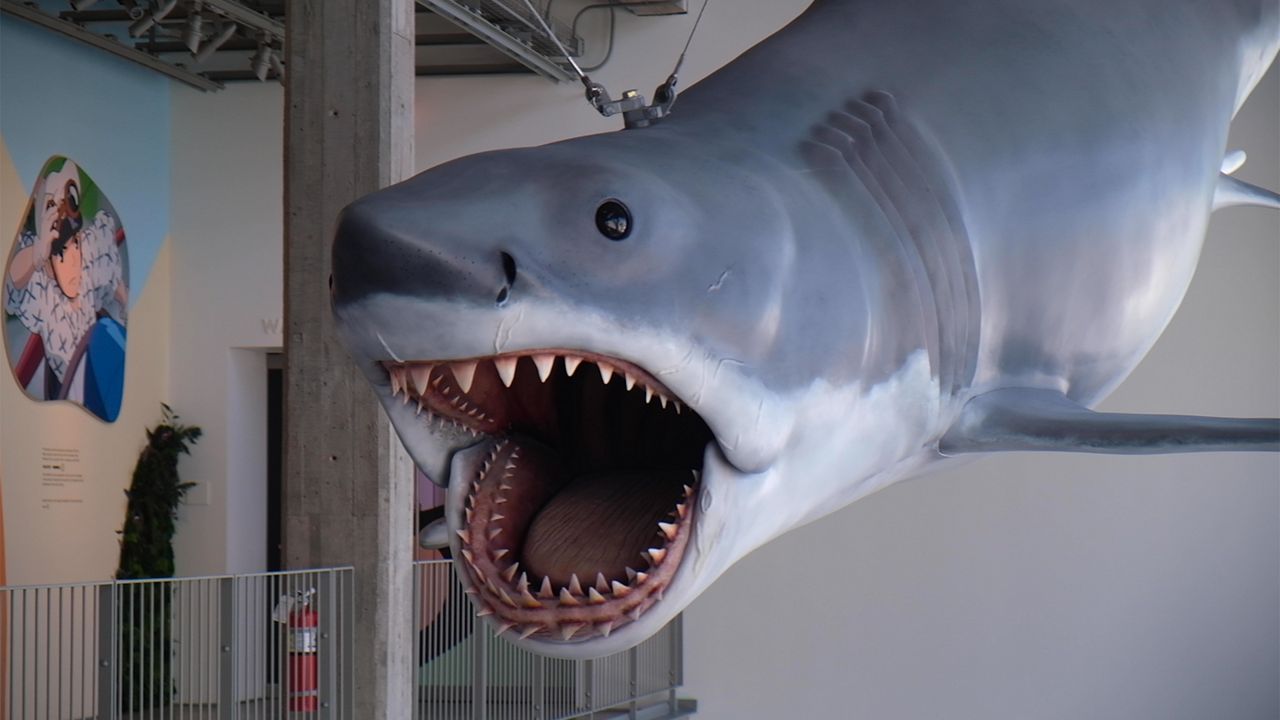LOS ANGELES — After much delay, some controversy, and a pandemic, the doors of The Academy Museum of Motion Pictures will open to the public on Sept. 30.
With its new Renzo Piano-designed, state-of-the-art screening facility, and a painstaking restoration of the streamline-moderne May Co. building, which dates back to 1939, the museum is being billed as Los Angeles' first world-class museum devoted to the art, science and history of the movies.
Visitors will get to see important artifacts like the "Citizen Kane" (1941) Rosebud sled, Dorothy's ruby red slippers from "The Wizard of Oz" (1939), and Bruce, the shark from Steven Spielberg’s "Jaws" (1975), but wait, there’s more! Seven stories and 300,000 square feet more, of gallery and event space.

The first movie the museum’s director of education, Amy Homma, remembers seeing was, in fact, "The Wizard of Oz," and that Technicolor musical extravaganza left a lasting impression on her.
“It was just this overwhelming sense of escapist joy, where you could really imagine yourself as Dorothy, being taken to a completely magical land with the click of a heel,” Homma said. “And how it was all a team effort, in the end, for her to be a part of Oz and for her to find her way back home, it just resonates with every little kid.”
As education director, Homma in particular loves the animation room as oftentimes animation is a child's gateway into the world of movies, making it a great teaching tool. One treasure the room holds is a vintage Disney studio animation table. Homma explained how looking at an artist’s workspace is a great way to demonstrate process to children.
“What would it feel like to hold that pen and that paintbrush in your hand as you paint on this pape?” she said. “We want to be a place where hard technical skills can grow, and also critical thinking skills. We want to watch films and clips with students of all ages and all abilities, where we have discussions.”
The world has changed since 1939’s "Wizard of Oz," and our current discussions around movies are increasingly focused on how to re-assess and frame not only the positive aspects of cinema history, but also the negative, ugly ones.
“I'm a mom of two young daughters, ages 6 and 4,” said Homma. “We have conversations about race and racism. We have conversations about stereotypical depictions. We have conversations about consent that they're seeing in animation. I really think that it's our job as educators to think about appropriate ways that we can build out these conversations for learners to have.”
Recently, The Academy of Motion Picture Arts and Sciences has been responding and adapting to the times amid criticisms around diversity and inclusion. Museum president Bill Kramer noted that they have worked to address the past and to look to the future in a proactive way.
“It's a core part of our mission,” said Kramer. “We worked with incredible members of the Academy, our inclusion advisory committee, to help ensure that we are telling these diverse and inclusive stories. It's a must. We're living in a time where people expect honest, truthful, transparent conversations. And what we did not want to do as a museum of film history is to erase our past.”
From the silent era to the inaugural exhibition focusing on Japanese master animator Hayao Miyazaki, the museum is a living, breathing space designed to change over time.
To help encourage community engagement, kids under 17 years old will be admitted to the museum for free.
“That gives us such a rich opportunity to make sure that kids from all over the world are learning from our objects, our galleries and our screenings and programs,” Homma said.
The Academy Museum of Motion Pictures hopes to be a new home for the movies here in Los Angeles, and perhaps Dorothy said it best when she declared, “There's no place like home.”




